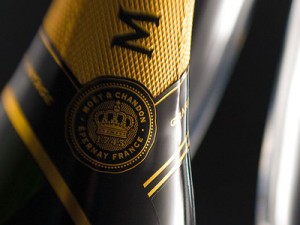 Champagne gets the most attention in December in the anticipation of Christmas and New Year’s Eve. And maybe a second glance when planning a big celebration. But more and more, consumers are realizing that the bubbly fits into everyday occasions, too.
Champagne gets the most attention in December in the anticipation of Christmas and New Year’s Eve. And maybe a second glance when planning a big celebration. But more and more, consumers are realizing that the bubbly fits into everyday occasions, too.
Most people think of Champagne as being one distinct taste, but in reality there are many different styles. This can be confusing for consumers who are not adept at deciphering labels.
Most Champagne or sparkling wine on the shelves is brut, which means dry, but also you’ll see sec (literally dry), which in vino-speak means off-dry. Demi-sec is a medium dry style with noticeable sweetness, and the sweetest are douz and moelleux.
With so many styles to choose, it can seem a little overwhelming. To make the choice simple, consider the food.
The following pairings are just some of the diverse everyday foods that champagne can complement.
Extra brut, brut and sec go best with salty foods like popcorn, shrimp, salmon, potato chips, sushi, brie and gouda cheese, nuts, oysters, lobster bisque, curry, fried foods, pancakes, quiche, eel, scrambled eggs, olives, sashimi.
Demi-sec stands up to the spice and richness of Asian cuisine, almonds, sausage, smoked salmon, crab, eggs benedict, lobster, pate, sweetbread, peaches, lamb.
Douz and moelleux are ideal for desserts, whether with light ones like fresh raspberries or rich ones like cheesecake. Anything sweet will pair well with douz and moelleux.
THE VALUES
- NV Nicolas Feuillatte Brut, France (about $57 retail)
- NV Moet and Chandon Brut Imperial, France (about $70 retail)
THE SPLURGES
- NV Pol Roger Brut Reserve, France (about $82 retail)
- NV Taittinger Nocturne Sec, France (about $99 retail)
- NV Veuve Clicquot Demi Sec, France (about $75 retail)